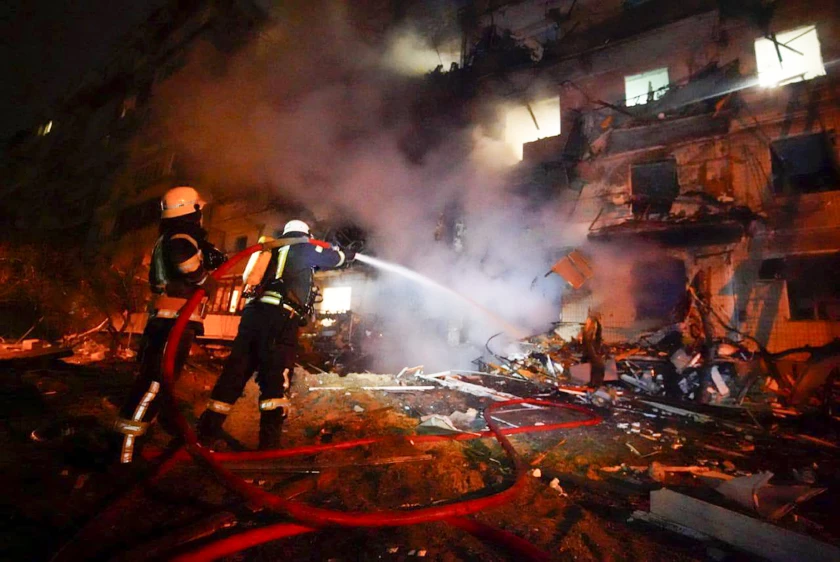KYIV, Ukraine —
Russian troops entered the Ukrainian capital in the early hours of Saturday and waged the first street fighting as authorities in Kiev urged the population to take shelter. The country’s president, Volodymyr Zelenskyy, rejected a US offer to be evacuated, insisting he would stay. “The fight is here,” he said.
The clashes follow two days of fighting that left hundreds dead and destroyed bridges, schools and residential buildings. US officials believe that Russian President Vladimir Putin is determined to overthrow Ukraine’s government and replace it with his own regime.
The assault represented Putin’s boldest effort to date to redraw the world map and revive Moscow’s Cold War-era influence. The offensive triggered a wave of international efforts to end the invasion, including direct sanctions on the Russian leader.
As his country fended off explosions and gunfire, and with the fate of the capital hanging in the balance, Zelenskyy called for a ceasefire and in a somber statement warned that several cities were under attack.
“Tonight we have to stand firm,” he said. “The fate of Ukraine is being decided right now.”
Zelenskyy was asked to leave Kiev at Washington’s urging, but the politician turned down the offer, according to a senior US intelligence official with direct knowledge of the conversation. The official said the Ukrainian president claimed “the fight is here” and that he needed anti-tank ammunition, not “a trip.”
Kiev authorities have asked residents to take cover, stay away from windows and take precautions to avoid being hit by flying debris or bullets.
The Kremlin accepted Ukraine’s offer for talks, but it seemed more like an attempt to extract concessions from the embattled Zelenskyy than a gesture toward a diplomatic solution.
The Russian army continued its advance by reclaiming the southern city of Melitopol on Friday. However, in the confusion of the war, it was not clear which parts of the Ukrainian control and which are in Russian hands.
As the fighting continued, the Ukrainian military reported the shooting down of an II-76 transport plane with Russian paratroopers on board near Vasylkiv, a city 40 kilometers (25 miles) south of Kiev, a report confirmed by a senior U.S. official. US intelligence. This type of aircraft can carry up to 125 paratroopers.
A second Russian transport plane was shot down near Bila Tserkva, 85 km (50 miles) south of the capital, according to two US officials with direct knowledge of the situation on the ground in Ukraine.
Moscow has not commented on either plane.
The United States and other global powers imposed the harshest sanctions on Russia as the invasion rippled through the global economy and energy supply, threatening to hit ordinary people even harder. According to United Nations officials, millions of people could flee Ukraine. Sports competitions moved to punish Russia, and the popular Eurovision song contest banned its participation in the May finals in Italy.
Despite everything, Russia remained impassive and vetoed a UN Security Council resolution that demanded that it stop the attack on Ukraine and withdraw troops immediately. Although it was an expected response, Washington and its allies argued that the effort would expose Moscow’s international isolation. The result — 11 votes in favour, one against, with China, India and the United Arab Emirates abstaining — showed significant but not total opposition to Russia’s invasion of its smaller and militarily weaker neighbor.
NATO, for its part, decided for the first time to mobilize part of its response force to protect its members in Eastern Europe. The alliance did not say how many soldiers it would send, but said it would be a land, sea and air operation.
The second day of the Russian invasion, the largest ground war on the continent since World War II, focused on the Ukrainian capital, where Associated Press reporters heard explosions before dawn. In some areas there were shootings.

